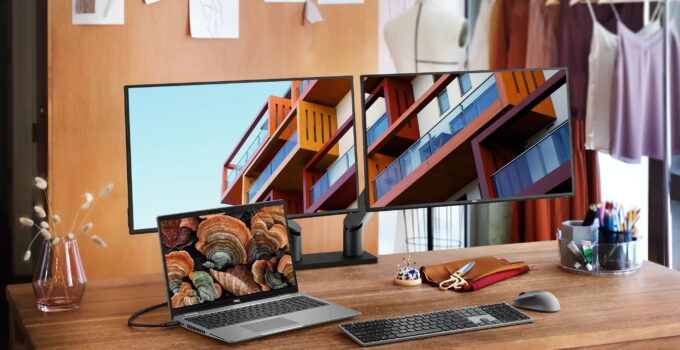Having two monitors connected to your computer allows you to be more productive and makes multitasking easier. Whether your two monitors are connected via an extended desktop or a mirrored display, dual monitors can make working from home or in the office far easier.
Adding a docking station to the mix provides even more functionality, allowing you to attach multiple accessories at once such as external hard drives and peripherals. A docking station allows for quick set-up and ensures that all of your applications can work with one simple connection.
Page Contents
Tips on Using Dual Monitors and Docking Stations
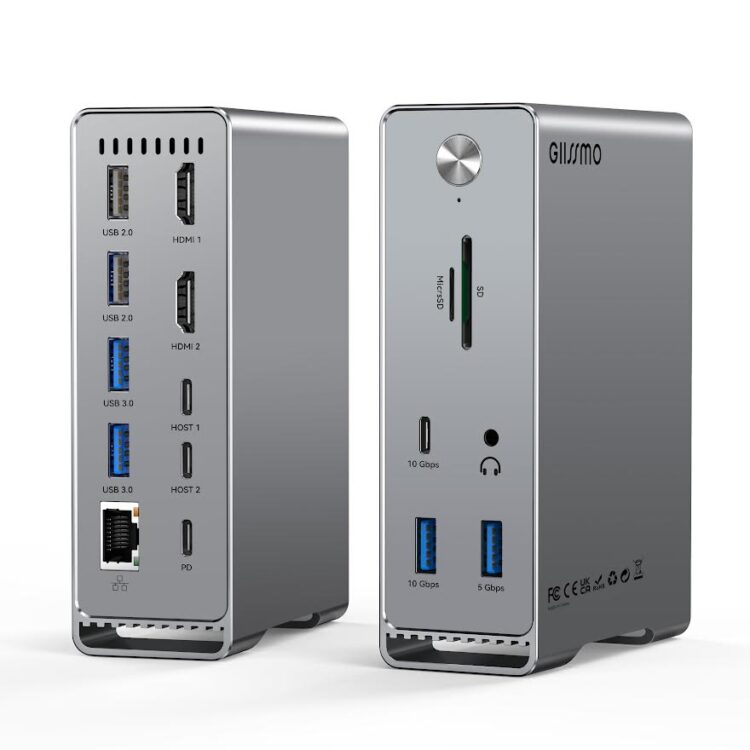
Dual monitors and docking stations like Giissmo can be a great way to increase productivity and make work more efficient. But in order to properly utilize them and make the most out of them, one needs to be aware of all the tips and tricks related to them.
1. Place them at the right angle
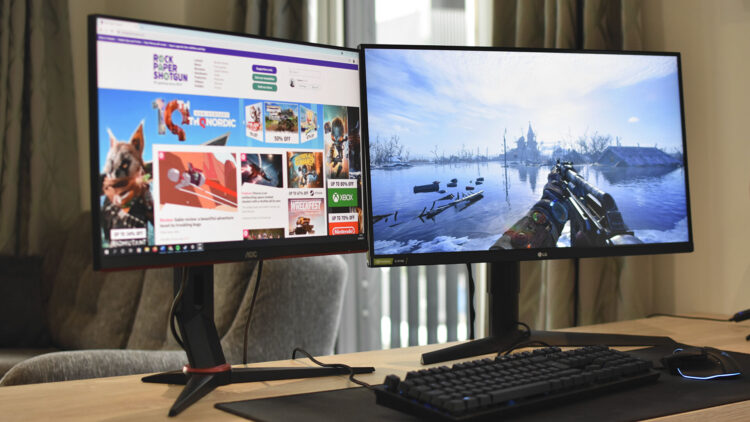
Source: rockpapershotgun.com
When using two monitors, or a monitor and a laptop, ensure the screens are viewed at comfortable angles. This means they should be facing straight ahead, slightly tilted back, and adjusted so the top of the screens is at or below eye level.
It’s also important to aim for a uniform contrast and color between displays or laptops. You may have to adjust your color settings to fix discrepancies between two different models of displays or laptops due to different contrast ratios and brightness levels.
Keep in mind that if you’re using multiple monitors with a docking station, your screens will all be connected to one another. Be sure to give each display equal space on the screen for the best view!
2. Utilize the extra space
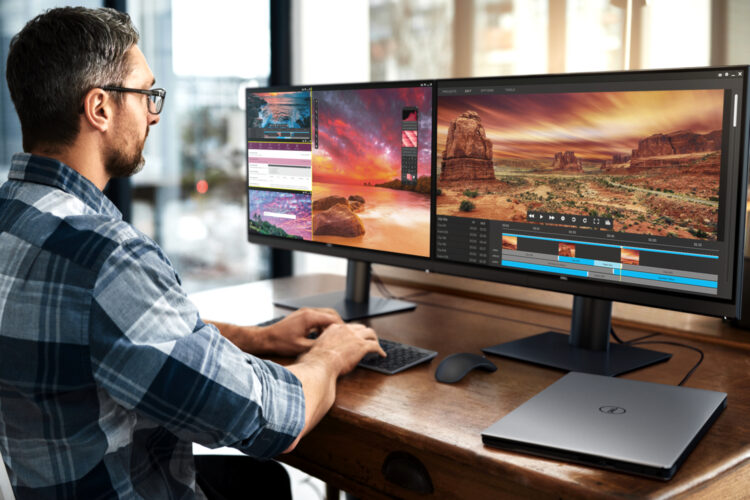
Source: digitaltrends.com
When using a dual monitor configuration, it is important to maximize the potential of the extra space. There are several ways to do this:
- Increase productivity: Utilizing dual monitors can increase productivity because tasks can be completed on one monitor while keeping the other monitor open for reference documents. This allows users to look up information or check emails without choosing between tasks.
- Customize screen configuration: Dual monitor setups allow users to customize their screen configurations so they can have applications and windows that are used most often on the same display larger. Arrange your desktop in any way you choose; include multiple things on one display, or separate them into two different ones.
- Create custom split views: Divide applications, windows, and tabs into different portions using split views or virtual desktops. Customizing your displays makes multi-tasking easier so you can utilize all available space with just a few clicks of a mouse.
- Monitor power-saving features: Modern displays come with power-saving features such as ambient brightness sensors and automatic sleep modes that let users keep their monitors running but lower power consumption when not being actively used. Make use of these settings to maximize battery life and reduce operating costs.
3. Use multiple applications on different monitors
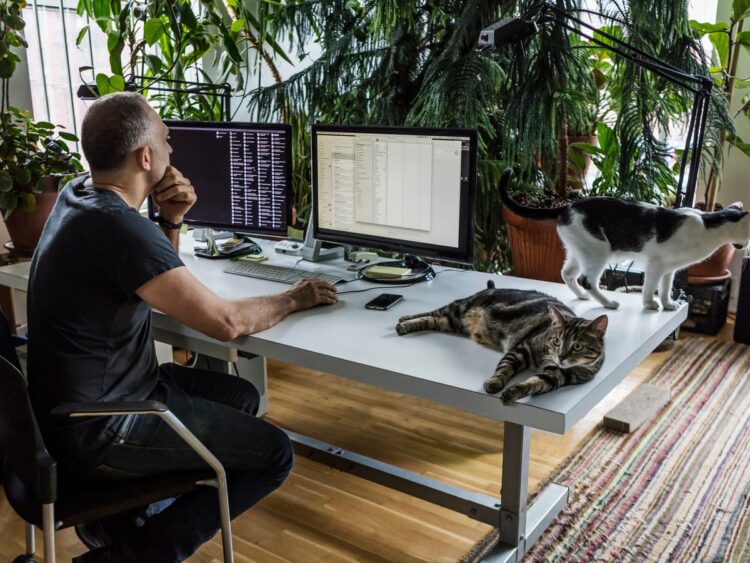
Source: zdnet.com
Running multiple applications on dual monitors enables the user to do quick data comparisons and have instant access to pertinent files without switching back and forth between programs. This means less time is spent switching between tasks instead being for devoted for completing the task. Moreover, using multiple displays also increases the available workspace which can be really useful when working with datasets or coding programs that require a lot of research material in one place while executing codes or creating architectures in another.
When utilizing dual displays with laptops, consider external keyboards and mice as they will enable faster inputting than the laptop’s built-in trackpad and keyboard. In addition, docking stations offer expansion ports that enable additional peripherals such as an external hard drive, extra USB ports, and more rapid data transfer speeds through Ethernet connections, etc. Thus setting up two monitors with a docking station offers immense benefits both in terms of speed as well as productivity while performing various tasks simultaneously.
How to Set Up Dual Monitors and Docking Stations
The following steps will help you easily set up your dual monitors and docking station:
- Make sure that your computer’s display port is compatible with dual monitor display adapters. This can usually be verified in your system’s user guide or on the manufacturer’s website.
- Connect both external displays to the corresponding ports on the dock. An adapter, supplied by the manufacturer, may be needed if one of the ports is not compatible with standard cable connections; however, always ensure that all components are correctly connected before proceeding.
- Configure and optimize settings within the Control Panel or Display Settings menu on both screens to best meet your needs – this includes setting resolution, refresh rate, scaling, etc. It’s recommended that identical configurations be used for both displays to ensure an optimal viewing experience.
- Connect any additional peripherals as needed to bring extra functionality or connectivity such as USB keyboards/mice, wireless devices, or printers as well as ensure that audio playback works from both screens if necessary.
Troubleshooting Common Issues

Source: totalityservices.co.uk
Dual monitors and docking stations can be a great way to increase your efficiency while using a laptop. However, they are not without their problems. Here are some of the most common issues you may encounter when using one or more monitors with a docking station:
- Display Issues – If two or more monitors are connected to the laptop via the same docking station, you may experience display problems such as flickering, ghosting, or incorrect scaling.
- USB Connectivity Issues – You may encounter USB ports that are no longer functional due to damage or wear and tear over time.
- Video Card Installation Issues – If your laptop does not have a dedicated graphics card or if you need to replace your existing one, this can cause compatibility issues with your dock and multiple monitors.
- Audio Issues – Incorrect audio settings can lead to audio distortion coming out from the speakers connected to the dock. Additionally, if you have multiple sound cards installed in your laptop (such as Dolby Digital), they must be properly configured in order for sound playback on each monitor.
Conclusion
In conclusion, setting up a dual monitor workstation is a worthwhile endeavor because it can significantly improve productivity by providing more screen real-estate for multitasking. By understanding how docking stations and dual monitor connectivity works and being prepared with proper connections and peripherals ahead of time, you can ensure that the setup process is quick and painless. With a fully functional dual monitor system in place you will be able to take advantage of increased workflow efficiency right away!

